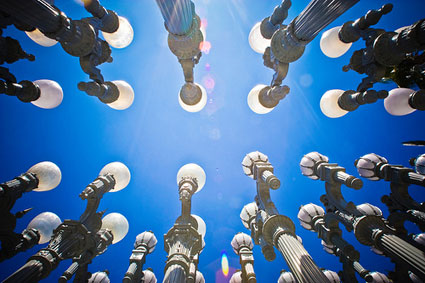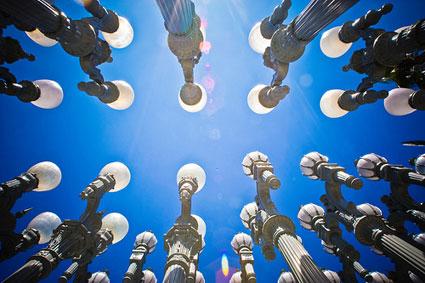
Untitled, uploaded to flickr by honeybeejen, July 12, 2009
We began Celebrating Urban Light in January, and since then more than six months and a thousand images have passed by. The project, which invited visitors to submit their pictures of our landmark sculpture, left me wondering how digital photography has impacted the way we perceive public art since these days anyone can take a picture of art, upload it, and distribute it worldwide within seconds.
Curious, I posed my question to Charlotte Cotton, head of LACMA’s photography department, and to Joshua Decter, director of USC’s Master of Public Art Studies: Art in the Public Sphere program. Cotton told me that the sharing aspect of digital photography has created a communal experience among photographers, particularly in terms of participation in contests like ours. There’s a feeling of being a part of something, of being a part of art. This photographic exchange, she said, turns a fixed, monolithic sculpture like Urban Light into something even bigger than it already is.
For Decter, the more important question is if a picture—one person’s re-imaging of art—can transform another person’s relationship to and understanding of said art. His answer—it’s debatable. Decter said that photography creates a “sensation of access” which is quite different from actual access, even though some contend that the former can be substituted for—or has already become interchangeable with—the latter within the broader public sphere of culture. He gave me a great example—seeing a picture of a friend’s baby and actually holding the baby are entirely different experiences; one can hardly compare to the other. In the case of Urban Light, I have to agree; there’s nothing like passing by 200 gridded, vintage streetlamps alit.
I connected with both Cotton’s take—digital photography creates a new, shared art experience—and Decter’s take as well—there’s nothing like the real thing. Together, their ideas reminded me of a core concept of artist Koo Jeong-A’s work that I find rather enchanting: it is only once her work is seen as art that she considers it complete.



